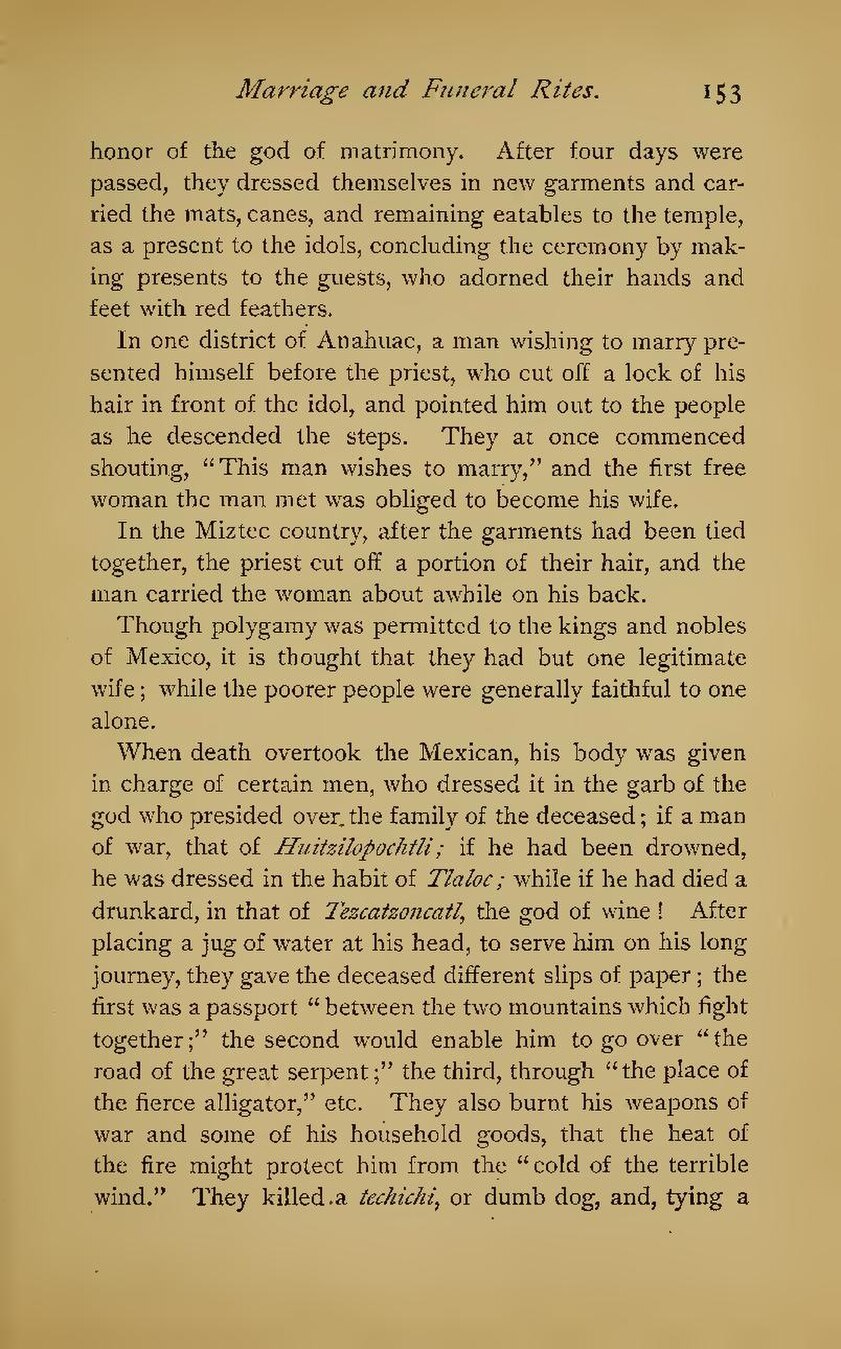honor of the god of matrimony. After four days were passed, they dressed themselves in new garments and carried the mats, canes, and remaining eatables to the temple, as a present to the idols, concluding the ceremony by making presents to the guests, who adorned their hands and feet with red feathers.
In one district of Anahuac, a man wishing to marry presented himself before the priest, who cut off a lock of his hair in front of the idol, and pointed him out to the people as he descended the steps. They at once commenced shouting, "This man wishes to marry," and the first free woman the man met was obliged to become his wife.
In the Miztec country, after the garments had been tied together, the priest cut off a portion of their hair, and the man carried the woman about awhile on his back.
Though polygamy was permitted to the kings and nobles of Mexico, it is thought that they had but one legitimate wife; while the poorer people were generally faithful to one alone.
When death overtook the Mexican, his body was given in charge of certain men, who dressed it in the garb of the god who presided over the family of the deceased; if a man of war, that of Huitzilopochtli; if he had been drowned, he was dressed in the habit of Tlaloc; while if he had died a drunkard, in that of Tezcatzoncatl, the god of wine! After placing a jug of water at his head, to serve him on his long journey, they gave the deceased different slips of paper; the first was a passport " between the two mountains which fight together;" the second would enable him to go over "the road of the great serpent;" the third, through "the place of the fierce alligator," etc. They also burnt his weapons of war and some of his household goods, that the heat of the fire might protect him from the "cold of the terrible wind." They killed a techichi, or dumb dog, and, tying a
